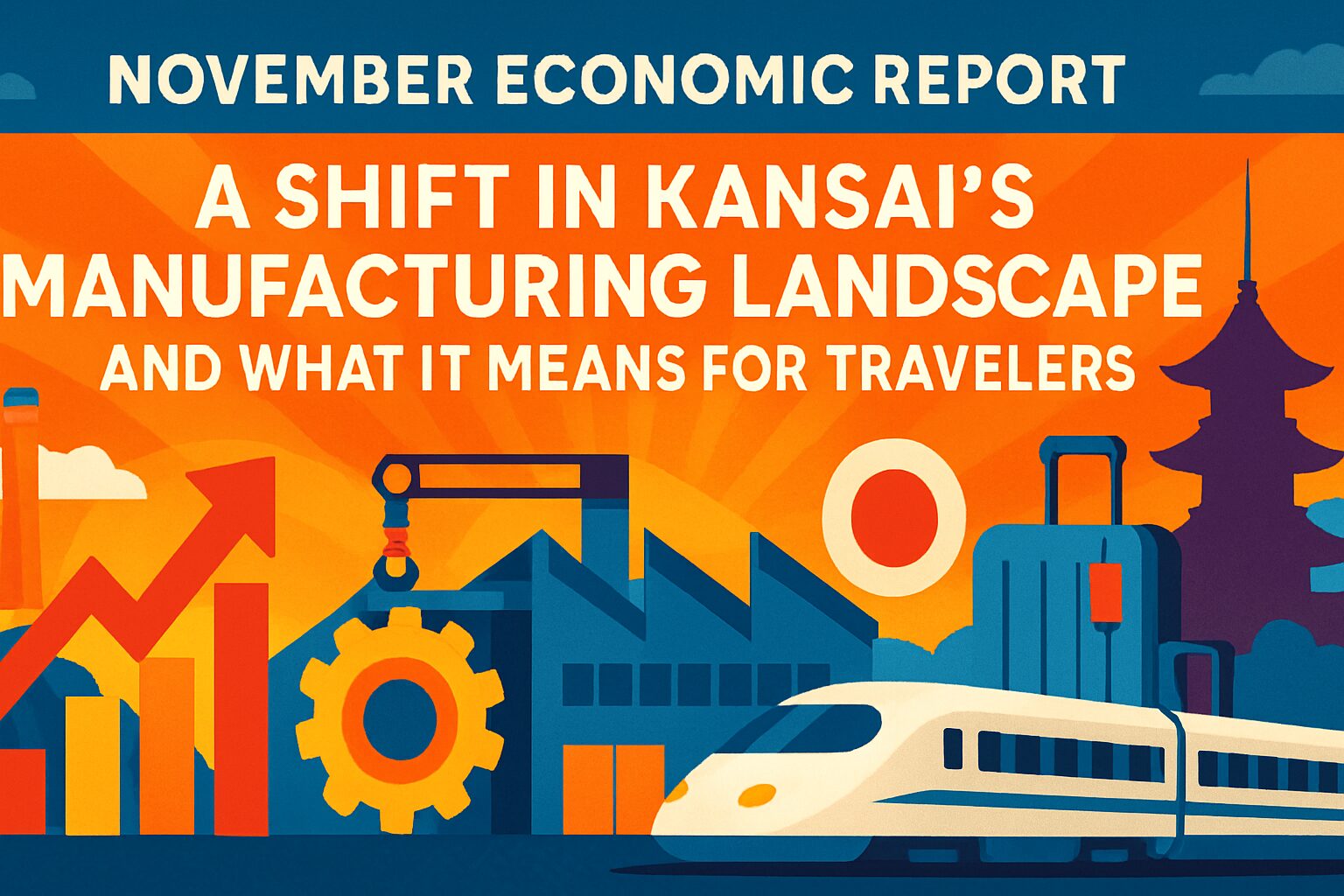A Glimpse Behind the Scenery of Kansai’s Economy
While visitors flock to Kansai for its vibrant culture, historic temples, and world-renowned cuisine, a recent economic report offers a deeper look into the engine that powers this dynamic region. The Japan Research Institute (JRI) has released its November economic analysis, highlighting a significant trend in the Kansai area’s manufacturing sector: a decline in labor productivity. For travelers, this economic shift provides a unique context for understanding the region’s past, present, and future.
Key Findings: Kansai’s Productivity Challenge
The report reveals that labor productivity in the Kansai manufacturing sector has been trailing the national average since the 2000s. This gap has become more pronounced recently.
According to the data for fiscal year 2022, labor productivity in Kansai’s manufacturing sector—measured as value-added per employee—stood at approximately 13.13 million yen. This figure is notably 7.3% lower than the national average of 14.16 million yen. This indicates a challenge for a region historically celebrated as one of Japan’s industrial heartlands.
The Story Behind the Numbers
The JRI report attributes this trend to several factors. A primary reason is a slower transition to higher value-added industries compared to other parts of Japan. Furthermore, sluggish investment in new equipment and technology has impacted efficiency, particularly in key sectors like electronics and chemicals. This contrasts with Kansai’s historical reputation as a hub of innovation and “monozukuri” (the art of making things).
What This Means for Visitors to Osaka and the Kansai Region
While these economic figures may seem distant from your travel plans, they signal a region in transition, which can subtly shape the visitor experience and hint at future developments.
The Evolving Local Experience
The economic landscape underscores the increasing importance of tourism and service industries to the region’s vitality. Your visit and spending at local shops, restaurants, and attractions contribute more significantly than ever to the local economy. This economic reality can also foster a spirit of innovation in the hospitality sector as businesses strive to attract global visitors.
A Future of Innovation and New Attractions
The report emphasizes that for Kansai to boost its productivity, it must accelerate investment in digitalization (DX) and green transformation (GX), and shift towards high-value sectors. This forward-looking strategy could create new points of interest for future travelers.
Imagine factory tours showcasing cutting-edge robotics and sustainable technologies. Picture new museums and innovation hubs dedicated to the next wave of Japanese technology, born out of this need for transformation. Events like the 2025 Osaka-Kansai Expo are a clear manifestation of this ambition, aiming to position the region as a leader in future technologies and sustainable societies. Your visit today places you at the crossroads of Kansai’s rich industrial heritage and its ambitious, tech-driven future.
Conclusion: A Resilient Region on the Brink of Change
The JRI report paints a picture not of decline, but of a region facing a crucial challenge with resilience and a clear path forward. For travelers, this economic backdrop adds a fascinating layer to the Kansai experience. You are not just visiting a place of ancient temples and bustling markets, but a dynamic region actively reinventing itself. The Kansai you see today is a snapshot of this evolution, where tradition and a forward-looking vision for the future coexist.








